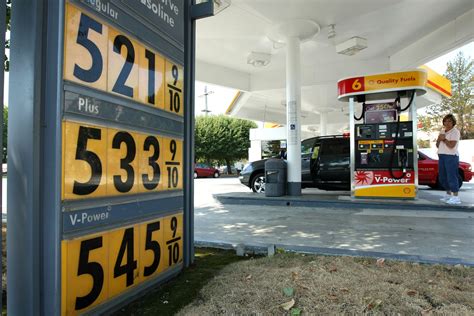By Katabella Roberts
The price of fuel across the United States surged faster than crude oil prices in the last month, leaving Americans still paying more at the pump.
The skyrocketing price of fuel comes as the United States has shipped more refined products like gasoline, diesel, and fuel oil, abroad to supply European markets following Russian President Vladimir Putin’s invasion of Ukraine in February, further tightening the market.
Disruptions to global energy supplies since Russia’s invasion of Ukraine and subsequent sanctions on Moscow by the west have already impacted global gas prices.
U.S. refined product exports have averaged 6.3 million barrels per day (bpd) in the past month, verging on the fastest rate of export in U.S. history.
Meanwhile, the price of gasoline has increased by 30 percent in the United States, and U.S. heating oil futures, a proxy for diesel, have increased by 40 percent.
According to data from the automotive group AAA, the national gas average as of May 6 is $4.279, up from $4.164 a month ago and $2.941 this time last year.
States that have experienced the biggest increases in the past week are Michigan, Ohio, and Washington, D.C.
New data from the Energy Information Administration (EIA) this week shows that total domestic gasoline stocks decreased by 2.2 million bbl to 228.6 million bbl last week, while demand for gasoline increased from 8.74 million b/d to 8.86 million b/d.
The combined demand and rising oil prices have translated to more pain at the pump for Americans and EIA notes that pump prices will likely increase as oil prices remain above $105 per barrel.
Meanwhile, U.S. crude futures have risen nearly 17 percent since Russian forces invaded Ukraine on Feb. 24.
Traders believe the world’s stockpiles of fuel are not likely to see much of a boost anytime soon, pointing to big producers like OPEC, who this week agreed only to a modest monthly increase of oil production of 432,000 barrels a day in June.
The tight market is creating angst among traders, who say that it shows refiners are struggling to meet demand even as more crude becomes available through big reserve releases, such as Washington’s release of millions of barrels from U.S. strategic reserves, announced in March.
“Generally at this time of year, products lead crude, but in this case, the spread is much larger than normal. It’s a sign the product market is screaming to refiners, ‘Get to work, we need more supply,” said Phil Flynn, senior analyst at Price Futures Group.
The increasing fuel prices come amid the European Commission’s (EC) proposal to ban Russian oil by the end of the year, although that plan has been threatened by Hungary’s rejection to the ban, with Prime Minister Viktor Orban stating on Friday that it would amount to a “nuclear bomb” to his country’s economy.
Read More From The PatriotAmerican
Meanwhile, the U.S. Department of Energy on May 5 announced a “long-term replenishment plan” for America’s strategic petroleum reserve in an effort to alleviate supply disruptions to domestic and global crude oil and replenish stockpiles.
Under the plan, the United States will take bids this fall to buy back 60 million barrels of crude oil for its reserve.
Reuters contributed to this report.

